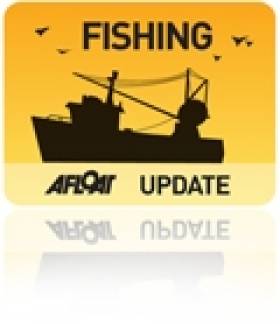Displaying items by tag: Supertrawler Arrest
Largest Vessel: Dutch 'Supertrawler' Arrested by Naval Service
#SupertrawlerArrest - Lorna Siggins of The Irish Times reflects on the 922nd boarding by a Naval Service fishery patrol in 2013 which could have been a routine affair, but for the vessel's size and history.
The 144-metre Dutch-registered Annelies Ilena is seven times the tonnage of the patrol ship, LÉ Roisín (P51) – and multiple times that of the rigid inflatable (RIB) deployed by Lieut Cdr Terry Ward to inspect it.
The ship, formerly the Irish-registered Atlantic Dawn, is one of the world's biggest fishing vessels, the largest super trawler and the biggest detention by the Naval Service to date.
It was among a fleet of Dutch vessels working some 100 nautical miles northwest of Tory Island when approached by a joint Naval Service/Sea Fisheries Protection Agency (SFPA) patrol on November 22nd, 2013.
The team intended to board several in the fleet in the knowledge that such ships flying other EU flags were notoriously hard to inspect. If caught, it could also be a test case for EU fishery law.
"Vessels with the ability to catch fish on an industrial scale in waters under our jurisdiction, but which almost never land here, pose particular challenges to ensure regulatory compliance," SFPA chair Susan Steele said at the time.
Had it been 20 miles north, it would have been in Scottish waters.
It was detained and escorted to Killybegs, Co Donegal, on suspicion of "high grading", a practice initiated, ironically, in response to stricter EU quota regulations. It involves retaining the most valuable fish and throwing smaller, less valuable, fish which are still over the minimum size back into sea.
For supertrawlers, it can make the difference of several hundred thousand euro per trip.
For much more on this story, click here.






























































